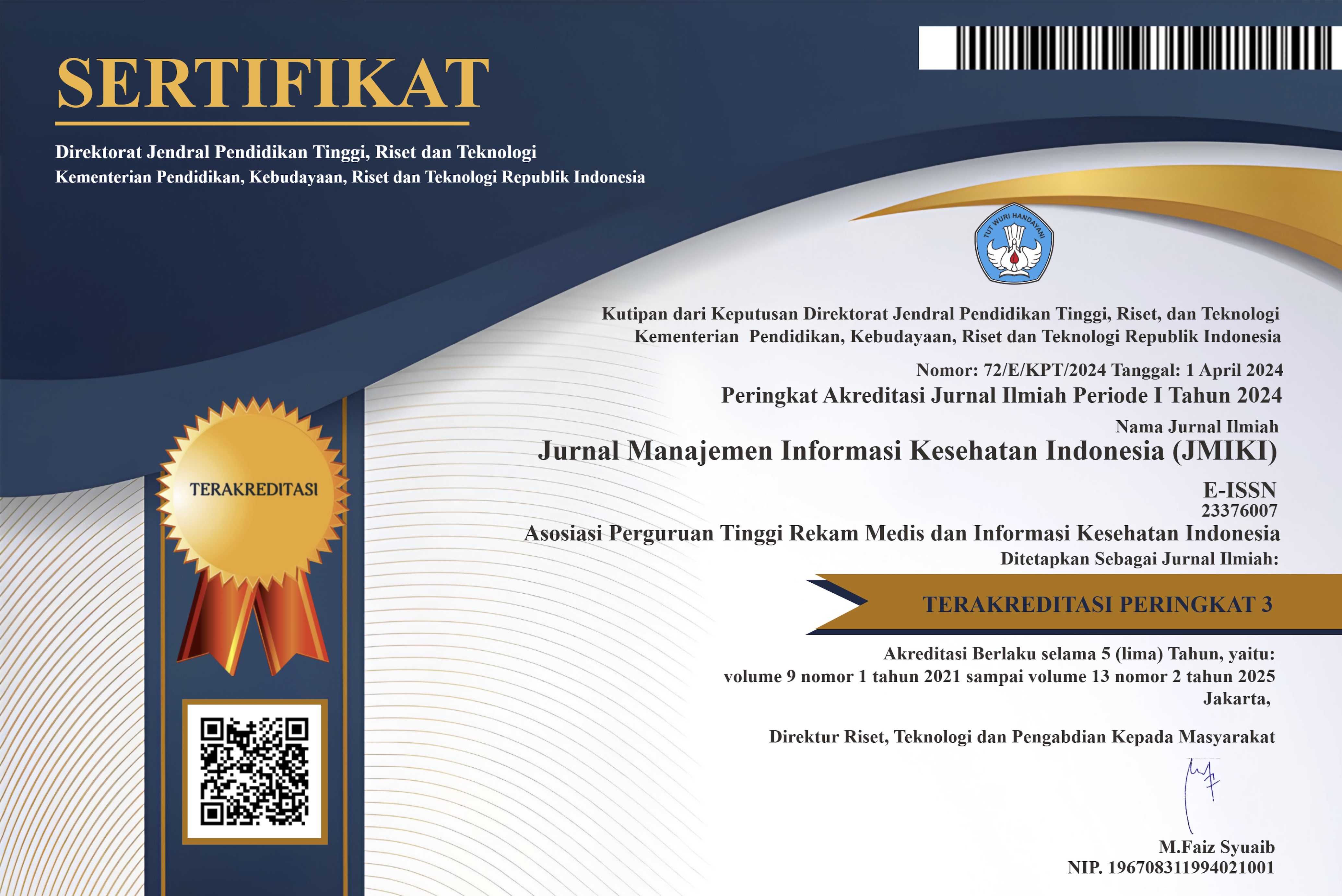PREDIKSI INCIDENCE DENGUE HEMORRHAGIC FEVER (DHF) MENGGUNAKAN JARINGAN SARAF TIRUAN (ARTIFIAL NEURAL NETWORK)
DOI:
https://doi.org/10.33560/jmiki.v6i2.199Keywords:
Time Series Analysis, Dengue Hemorrhagic Fever (DHF), Artificial Neural NetworkAbstract Time series analysis is one of the statistical methods used as tools to predict the incidence of a disease. Autoregressive Integrated Moving Average (ARIMA) model is a frequently used method. However, this method has some disadvantages as there are assumptions that must be met and can not explain nonlinear cases. This condition requires a more flexible method, namely Artificial Neural Network (ANN). This study aims to apply the ANN method to predict the incidence of Dengue Hemorrhagic Fever DHF 2018 in one district in East Java province. Selection of this district is based on the conditions in this area that experienced DHF Outbreak (KLB) in 2015. Data used in this reseach is incidence DHF from January 2013 to December 2017. Data is divided into two parts, namely training data consisting of incidence DHF januari 2013 until December 2016. Data testing consists of DHF incidence from 2017 to December 2017. The best ANN model is an ANN model with 9 nodes on a hidden layer with a Root Mean Square Error (RMSE) value of 7.914. DHF incidence prediction in 2018 January to December has tended to be constant at 9 and has a tendency to stagnate.
Downloads
Download data is not yet available.
Downloads
Published
2018-12-05
How to Cite
-, J. W. F. S. M., & Sidjabat, F. N. (2018). PREDIKSI INCIDENCE DENGUE HEMORRHAGIC FEVER (DHF) MENGGUNAKAN JARINGAN SARAF TIRUAN (ARTIFIAL NEURAL NETWORK). Jurnal Manajemen Informasi Kesehatan Indonesia, 6(2), 142–148. https://doi.org/10.33560/jmiki.v6i2.199
Issue
Section
Artikel




